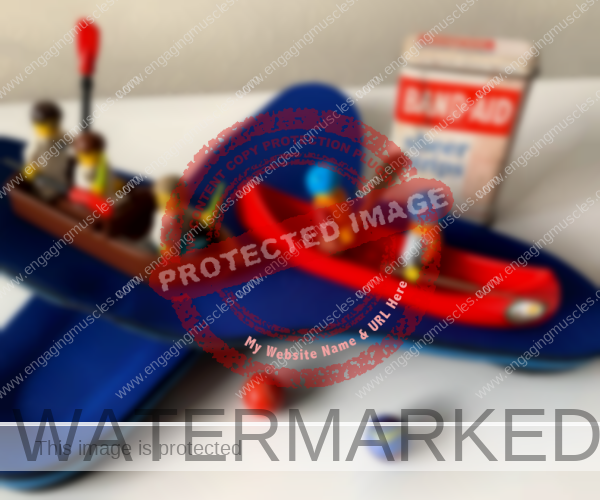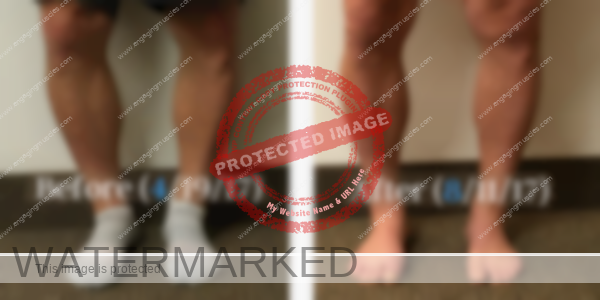I recently watched a short snippet of a lecture on foot orthoses presented at an international running conference.
Off to the left of the stage from where the presenter was standing was a slide with the words, Foot Orthoses “Straight Talking”. Those were the exact words. Quotation marks included.When experts on feet address pain or injury, you can bet your last dollar that “customized” foot orthotics are going to be framed in such a way as to show where they may have value. May being the keyword.
Talk about weaving a tall tale. Blending what comes out of pain science with the next best guess as to where orthotics fit doesn’t change the fact that there’s going to be a whole lot of additional compensation that follows the use of foot orthoses.
You aren’t likely to hear a foot orthoses enthusiast say, “Now, keep in mind, this is the next best option.”
Of course not. You also won’t hear any mention of custom shoe insoles throwing off the timing at which joints move. That’s a problem because the joints throughout your foot are expected to absorb shock with a device that forces your feet, hips, knees, and spine to take on more stress. Not to mention that muscles throughout your feet and the rest of your body will be weaker for what’s underfoot.
By not addressing the underperforming muscles before using orthotics, your body is left with the task of finding a different workaround.
The truth is there are workarounds for every bout of pain, injury, and surgical procedure you’ve experienced throughout your history of being alive.If you have experienced pain in your foot, and you went to a foot orthoses enthusiast, I’m willing to bet they added to the overall amount of instability. From there, it’s a matter of secretly crossing their fingers and hoping your body figures out how to compensate in such a way as to no longer experience the sensation of pain.
By putting pricey pebbles in your shoes, it’s possible to turn down the frequency of pain.
Meanwhile, behind the scenes and without your conscious awareness, another workaround was formed.
Foot orthoses add instability to instability.
Much like a mosquito that sucks blood from your body, foot orthoses aren’t capable of giving more than they take.Before using custom orthotic inserts, it’s entirely possible you had muscles that weren’t capable of answering the call at the right time. Unfortunately, experts on all things feet didn’t let you in on that side of the story. (You aren’t alone.)
(Priorities)
I’ll let you in on a little secret, resorting to putting orthotics in shoes takes less time than it takes to address muscles.
Imagine what happens when one muscle can’t answer the call. Your feet won’t be prepared for landing. If that same muscle can’t prepare your foot for a relatively soft landing, it’s also not going to control your foot as it comes in full contact with planet Earth.
Without knowing it, your foot is crashing into the ground with more force than it would when that one muscle is capable of pulling (generating tension) at the right time.
The muscle: tibialis anterior.
And that’s only one muscle out of many. Think about all the muscles that are ignored for the next best option.Foot orthoses aren’t capable of preparing your foot for a landing. It’s also not possible for orthotics to improve upon a muscle’s ability to control the foot as it collides with the ground.
Underperforming muscles are ignored for addressing symptoms.
And yet, in most cases, pain and injury come down to a muscle’s inability to pull at the right time.(Principles)
Remember, when experts address pain or an injury, locally, they miss many muscles that contribute to function elsewhere.
Muscles as far up as your hips and spine allow your feet to be more responsive to what the ground is bringing on every step.
Those same muscles also provide a whole lot of stability.
Your best chance of avoiding fragility as you grow older is to avoid the compensation that comes with the use of foot orthotics.
You’re about to find out the actual cost of using orthotics. It doesn’t matter if it’s over the short-term or long-term.
If you’re thinking, “Why didn’t anyone make me aware of this before now?” I can see why you would think that.
Question: Which attempt at addressing symptoms comes first, the needle or “custom” foot orthoses?
I don’t know about you, but I think I see a pattern that’s been going on for quite some time.
Buyer beware.
“…if all you have is a hammer, to treat everything as if it were a nail.”
– Abraham Maslow
Two Things About Strength and Conditioning
- You can’t expect to fire a cannon from a canoe. Most categories of footwear put your base of support in an environment that’s unstable. There’s also the fact that you can’t expect to have more stability throughout your feet without first having stability throughout your hips, trunk, and spine. For this reason, plantar fasciitis is less about your feet and more about what’s not occurring throughout the joints further up your chain. And yet, every expert and their uncle continue to chase the pain. Since we’re on the subject of plantar fasciitis, it’s helpful to know that walking in your house with socks on wood floors doesn’t allow for a stable environment for the motions of pronation and supination. Wearing socks on a wood floor doesn’t provide the necessary friction to allow your lower leg to follow your foot. If you’re following along, that would also mean that your hip can’t follow your lower leg. This is because the lack of friction between your sock feet and the wood floor didn’t allow your foot to drive your lower leg at the right time. If you’ve struggled with heel pain, you want to understand this side of the story. Continue walking around with sock feet that don’t allow for friction, and what you’re left with is more inflammation that was self-induced; not only that, you’re also shortening your stride, which leads to more tightening of your calf musculature. If you like to wear socks at home, I can relate. Pedestal Footwear offers technical athletic socks with a protective layer that provides more friction between your feet and a wood floor.
- When your brain doesn’t recognize stability at a joint, it’s due to muscles that aren’t as responsive as they can be. It’s not that they can’t respond; it’s that they aren’t capable of playing their role to the best of their ability. They are sluggish. When this occurs, muscles that are capable of playing the same role as the muscle in question will be forced to take on more of the workload.

Foot orthoses don’t increase stability.
That’s also the case with most running shoes.
To add insult to injury, foot experts regularly put foot orthoses in overly supportive shoes that increase the amount of instability throughout your base of support.
That’s why many buyers take their new foot orthoses out of their shoes. Never to be seen or felt again.
Instability is also the reason why babies don’t like to keep socks on their feet. Not because they have a device that brought the ground up to meet their feet, but rather, the inability to sense the feeling of having friction between the ground and their feet.
Orthotics feel awkward for good reason.
Right before the next slide went up, the observers were made aware of the takeaways, “…to sort of appraise it [the literature on foot othoses] appropriately, and sort of critically think their way through it.”
I don’t know about you, saying, “…and sort of critically think their way through it.” does not sound promising.
That’s when I decided to test the critical thinking skills of the experts.
They don’t “work”. From where I stand, I can point to many reasons orthoses don’t allow for the best possible outcome. Experts who sell orthotics have continued to settle for the status-quo. And in more ways than one, patients pay the price for this lack of attention to detail.
— Engaging Muscles (@rickmerriam) December 31, 2019
Having recently read a relatively new book called, Loserthink by Scott Adams (a.k.a., the creator of the Dilbert comic strip), my brief interaction with this tribe of orthotics enthusiasts reminded me of how difficult you have it. That’s the reason for the #Loserthink in my initial tweet.

Rather than restore stability, podiatrists, chiropractors, and physical therapists who sell orthotics increase compensation. By bringing the ground up to meet your arches, your feet are unable to initiate shock absorption. Your feet have nowhere to go but out.
In other words, your feet are forced to underpronate, a.k.a., supinate. With feet functioning from a position that’s far from optimal, more stress is forced upon your knees, hips, and spine.
That’s even the case with your shoulder. (emphasis added)
When it comes to working with orthopedic injuries and the musculoskeletal system, luck and placebo will only take an expert so far.
Your hunch is correct. You’re relying on answers from experts who don’t know what they don’t know.
The reality is experts make a considerable amount of money per pair of orthotics sold. And they are not as custom as you are led to believe.
Much like the over-the-counter store-bought kind, custom foot orthoses are a crutch. If your feet (and body) can adapt to your foot orthoses, down the road, they will become an anchor. So much so that you will get to the point of not being able to walk around your house without arch support.
What you just read is proof that orthotics take more than they give.
Continually pursuing and practicing that which doesn’t allow for the best possible outcome doesn’t lead one to achieve more expertise. There is deep work and a state of flow though. It’s this level of sacrifice, focus, and consistent effort that it takes to achieve mastery in something that has real power. The kind of power that when used for good, touches lives in ways that most practitioners dreamed about before entering their field of study. Sadly, most practitioners will never experience this level of work (or expertise) for themselves. In my mind, that’s no way to spend the majority of the hours you’ll have in this lifetime. Delivering on a promise is a gift for both the receiver and the giver.
Before I started writing this, I did a search. On the first page was an open-access article with the title, Foot Orthoses: How Much Customization is Necessary?
As it turns out, it doesn’t take much customization at all.Remember tomorrow.
SHIP.
(Art)
Thanks for taking the time to read this post! If you enjoyed this post, please subscribe to Engaging Muscles. You can also like Engaging Muscles on Facebook, subscribe to my YouTube Channel, or feel free to connect with me on Twitter @rickmerriam.
[Some of the links I’ve shared with you are affiliate links. In other words, if you make a purchase using one of these links, I will receive a commission. The commission doesn’t cost you any more than what you would pay for these items on Amazon (as an example). When you use any one of these affiliate links, you’ll be supporting the Engaging Muscles Podcast. This will help me to keep putting out valuable content.]Book mentioned:
LoserThink by Scott Adams
Product mentioned:


I agree with all that’s said here. I would like to mention my shattered sesamoid injury where my options were limited to a boot, an orthotic that off loaded the weight from my sesamoid vis a dancers pad With special shoe, or removal surgery. I opted for the orthotic and special shoe that severely limited my foots movement. I was in pt for 5 months while I wore this and my sesamoid healed. I was able to increase activity after 5 months and start to transition into other shoes. At 13 months I was able to start to transition out of the orthotics. Two years later I don’t wear them and all is healed. I don’t think the human body was designed to have anything under their feet, but we need to wear shoes at times. My body feels best when I’m barefoot.
Thanks for your comment, Michelle.
Barefoot is definitely the most natural. Given how much tactile feedback is taken in via the various receptors that are spread out throughout the skin on the soles of our feet, I do think our brains also benefit from experiencing bare skin in contact with the ground.
I see a commitment to going barefoot or wearing barefoot shoes as prehab and self-care.
From what you’ve described, I think having a certain amount of strength and stability prior to the injury made the move to no longer use the pad and special shoe easier. Cheers!